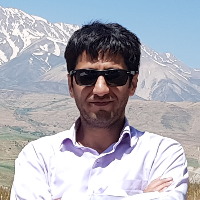Investigation of various chemical and advanced oxidation methods to degradation of recalcitrant contaminants from industrial wastewaters
Author(s):
Abstract:
Background And Aim
Nowadays the releases of some of the contaminants in the environment that have a high half-life remain in the nature, enter the food chain, and ultimately transmitted to humans. Presence of these materials in our body causes various complications including mutations in various genes and carcinogenesis. In recent years, many new advanced oxidation process (AOP) were introduced that their process is based on hydroxyl free radicals, which have great potential for the decomposition of various organic material. In this paper, various methods of chemical treatment of refractory materials, with emphasis on advanced oxidation of industrial wastewater have been investigated and their cons and pros are discussed.Methods
This paper was a review article in which using key words of advanced oxidation processes, degradation, treatment, wastewater and recalcitrant contaminant in scientific search engines including Science Direct, Google Scholar and Scopus, the related articles were collected and analyzed in the period of 1993 to 2016.Findings: In these methods, in addition to the higher oxidation potential, are very different from conventional methods in the operating conditions and adverse side effects for the environment. In general, ultrasonic waves and advanced oxidation technology such as plasma, Fenton, photo-Fenton, oxidation by peroxide, ozone and photo catalytic process such as O3/UV have been used to remove contaminants from water resources. Generally, some factors affecting AOP processes are pH, temperature, concentration and type of pollutant, type and concentration of catalyst. In addition, advanced oxidation processes can be used to degrade residual pollutants that remain after the purification process in the wastewater. As a whole, AOP is used as a pre-purification for residual pollutants having toxic and recalcitrant materials.
Conclusion
Generally, these methods have the advantages of high kinetics and purification efficiency. However, due to high operational costs and complexity of the process, they rarely are used as a single process for treatment of sewage and often used in conjunction with other treatment processes.Keywords:
Language:
Persian
Published:
Journal of Prevention and Health, Volume:2 Issue: 6, 2017
Page:
55
https://magiran.com/p1752472
مقالات دیگری از این نویسنده (گان)
-
Evaluation of Lead Removal from Aqueous Solutions with Nano-Composite of Layered Double Hydroxides Coated on Magnetic Activated Carbon
Hadi Dadashi, Banafsheh Norouzi, Yousef Dadban-Shahamat, Mohamadhadi Mehdinejad*
Journal of Health System Research, -
The effect of Juybar landfill on physicochemical parameters and heavy metals in groundwater resources
Yosof Dadban Shahamat, Zohreh Moghiseh*, Gholamreza Jamali Atargole, Mina Gharchi
Koomesh, -
Modeling for Weighting the Most Effective Evaluated Criteria of Indigenous Knowledge Using the BWM Method in the Management and Planning of Water Resources in Yazd Province
M. Khani *, H. Hoveidi, A. R. Yavari, M. R. Khani
Journal of Water and Sustainable Development, -
Investigation of the Benzene Concentration and Distribution in Tehran Using Geographic Information System Modelling
MohammadReza Khani, Mina Ghahrchi, Edris Bazrafshan, *
Journal of Health Research in Community,



